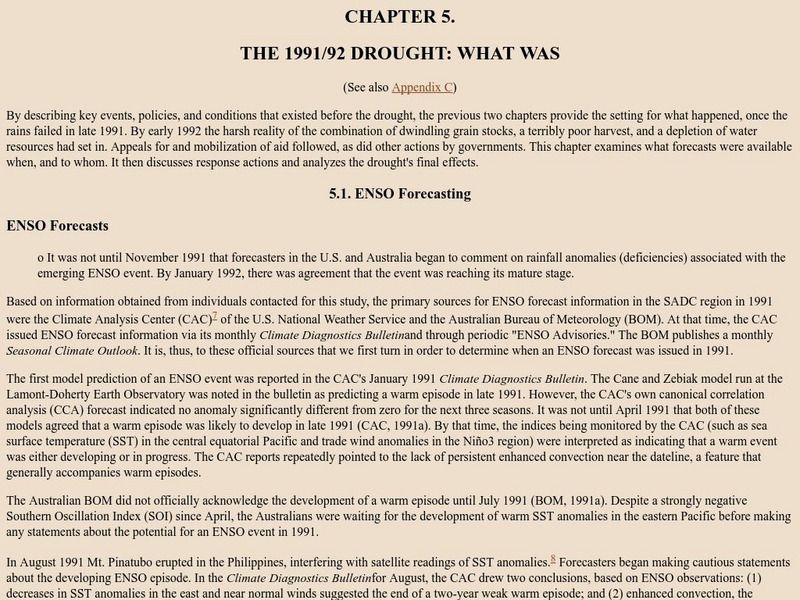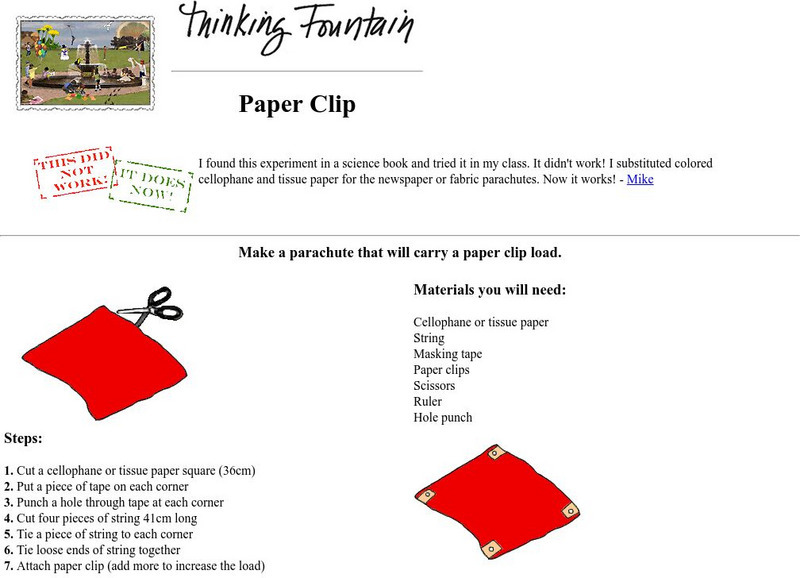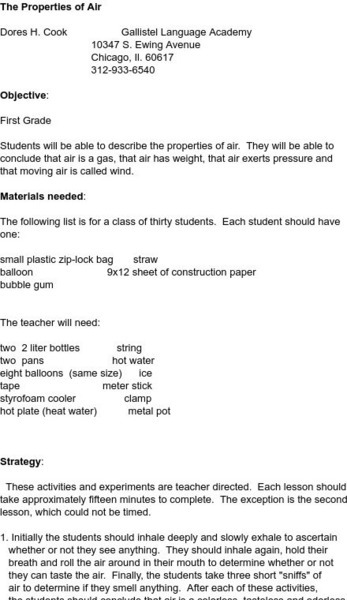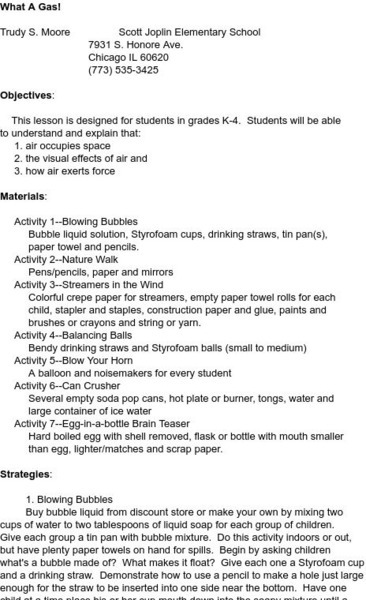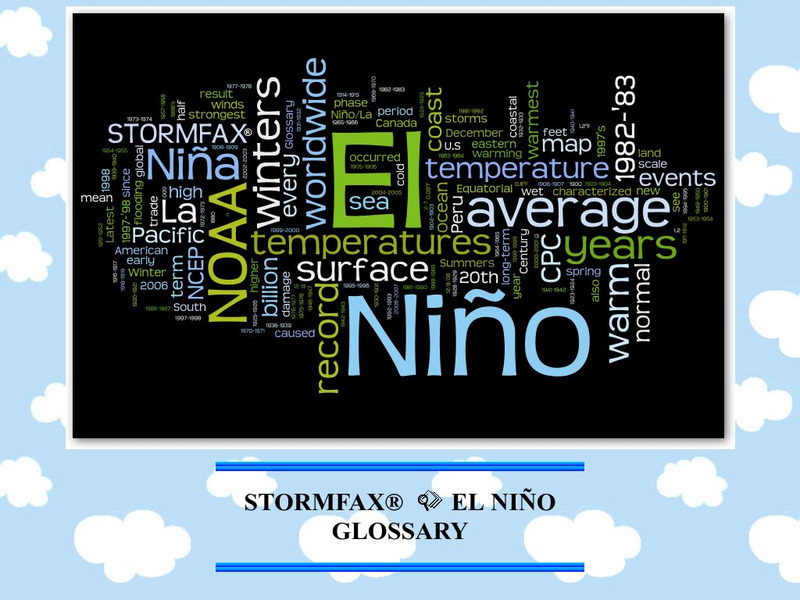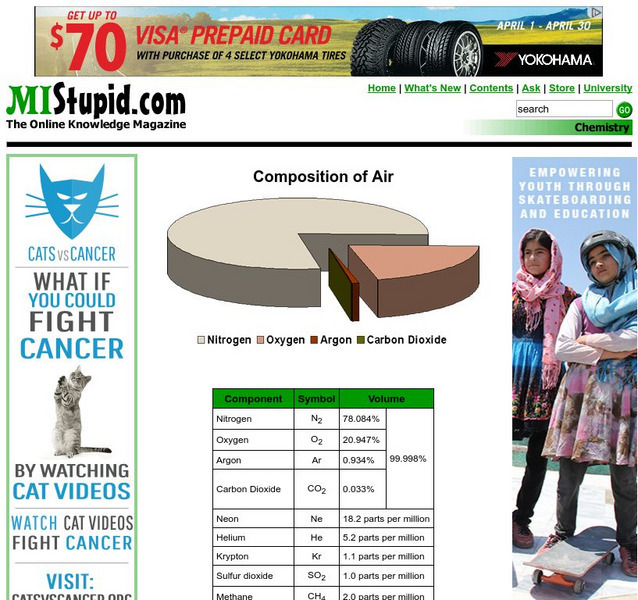HotChalk
Hot Chalk: Lesson Plans Page: Probing Into Plant Parts
In this lesson plan students will obtain a better understanding of a plant's needs, and how the various parts of the organism help it to meet its needs. Students will understand how some plants are alike and different.
Michigan Reach Out
Reach Out Michigan: Let's Catch Some Dirt From the Air
This site provides an experiment for early elementary young scholars to discover different dirt particles in the air, and explore causes of air pollution.
Annenberg Foundation
Annenberg Learner: Virtual Particle Lab: Compressibility of Air
Explore the particle model of matter. Run the simulations and see if you can predict the results.
University Corporation for Atmospheric Research
Ucar: Fact Sheet for El Nino
This site from the Univ. Corp. for Atmospheric Research provides detailed information on El Nino and its effects on the trade winds is offered at this site, with satellite photos.
Enchanted Learning
Enchanted Learning: Label the Lungs
Do you know the parts of the lung? Check out this lung diagram that can be printed out for students to label the various parts.
PBS
Nova Teachers: Can Buildings Make You Sick: Classroom Activity
In this lesson plan, participants will build a structure to collect particulates from the air from around the school building. Then observe and analyze the samples obtained to study indoor and outside air pollution.
NASA
Nasa: Global Wind Patterns
This site from NASA lists and defines global wind patterns. It features a graphic of these patterns and a self-test with answers.
North Central Regional Educational Laboratory
Kids Learn: Respiratory System Internet Workshop
Come and explore this internet workshop that was designed to introduce you to a study on the respiratory system. Students and teachers will benefit from this resource.
University Corporation for Atmospheric Research
Ucar: Modeling the Behavior of Air With Bottles
In this hands-on activity, students explore how temperature affects the behavior of air molecules.
University Corporation for Atmospheric Research
Ucar: Balloon Inside a Bottle
Air takes up space. It's only when air in the bottle escapes that more air is easily added!
Alabama Learning Exchange
Alex: Air Is All Around You
In this science lesson students will be asked the question, "Does air take up space?" and "Does air have weight?" Students will conduct experiments that prove that air has mass, takes up space, and exerts pressure.
University Corporation for Atmospheric Research
Ucar: What's in the Air?
Air is a mixture of naturally occurring gases and human-made air pollutants. Learn more about these gases and the role they play in our atmosphere.
University Corporation for Atmospheric Research
Ucar: Aerosols: Tiny Particulates in the Air
There are billions of tiny bits of solid and liquid floating in the atmosphere. Learn about those tiny floating particles called aerosols or particulates.
Khan Academy
Khan Academy: Air and Fluid Resistance
This article on Khan Academy is about air and fluid resistance that is caused by friction.
University Corporation for Atmospheric Research
Ucar: Bubbles on Bottles
Students observe that a change in the temperature of air can impact the size of a bubble placed on a bottle that is cooled and/or heated.
MadSci Network
Mad Scientist Network: How the Venturi Effect Relates to Architectural Design
A question and answer regarding wind velocity and its effects on architectural design. A good site for applying the concept of the Venturi Effect.
University Corporation for Atmospheric Research
Ucar: The 1991/1992 Drought
This site from the University Corporation for Atmospheric Research offers information on drought and global climate conditions, with an explanation of the trade winds.
Science Museum of Minnesota
Science Museum of Minnesota: Thinking Fountain: Paper Clip
In this lesson make a parachute that will carry a load of paper clips in this revised activity. Links provided for 2 other activities to demonstrate air resistance.
Science and Mathematics Initiative for Learning Enhancement (SMILE)
Smile: The Properties of Air
Lesson plan to teach properties of air. Students use balloons, plastic bottles, plastic bags and a meter stick to conclude that air is a gas that has weight, exerts pressure, and moves.
Science and Mathematics Initiative for Learning Enhancement (SMILE)
Smile: Aspects of Weather
A detailed weather lesson plan written for the primary, intermediate, and junior high level. Topics covered are weather symbols, thermometer, graphing temperature results, clouds, moisture and air pressure.
Science and Mathematics Initiative for Learning Enhancement (SMILE)
Smile: What a Gas!
In this lesson plan, students will understand and explain that air occupies space, visual effects of air and how air exerts force.
Other
Stormfax: El Nino Glossary
This site offers definitions for terms related to El Nino, including information on southern oscillation and its relationship to the trade winds.
Other
Mi Stupid: Composition of Air
A pie chart showing the main elements that air is composed of, followed by a table with more detail, and a few facts about human respiration.












